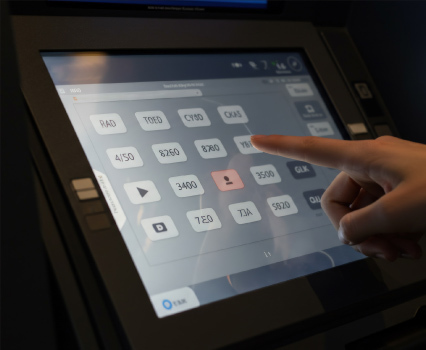Korea's Checkout Revolution: How Self-Checkout Systems Are Reshaping Retail

The way South Koreans shop is changing faster than ever, and now self-checkout systems are playing a significant role in that change. According to a Mark & Spark Solutions report, the self-checkout system market of South Korea is set for explosive growth from 112,560 units sold in 2023 to an estimated 229,319 units sold in 2030, which represents a CAGR of 12.5%.
Here’s a look at what is shaping this transformation and why it matters for retailers, technological companies, and consumers alike.
Why Self-Checkout Is Booming in Korea?
• The urban retail landscape in South Korea is dominated by convenience stores, with two major chains leading the way: GS25 (over 18,100 outlets) and CU (over 17,760 outlets). By the end of 2023, the number of convenience stores in South Korea had surpassed 55,200 nationwide. The density of stores combined with a high footfall makes self-checkout deployments an economically compelling option.
• Tech-savvy customers and digital payments are prevalent everywhere in South Korea, which boasts a high smartphone penetration rate. As of 2025, South Koreans had approximately 69.2 million cellular mobile connections, alongside 50.4 million internet users. Making payments through QR codes and mobile wallets means that cashless transactions and app-based transactions are ubiquitous among the Korean population. Moreover, most of the customers are already comfortable with self-service. McKinsey analysis indicates how self-checkout systems and mobile scan-and-go systems are being actively piloted.
• There is a strong push in the South Korean shopping market towards smart retail. Now, more retailers are investing in the latest technologies, including AI, cloud-based systems, and the rollout of self-checkout systems. Even unmanned stores have become a key component in digital transformation.
The Numbers: Segments, Costs & Forecasts
Market forecast
| 2023 | 2030 | Growth Rate |
| 112,560 units shipped | 229,319 units | 12.5% CAGR |
Market by Retail Type
| Supermarkets and Hypermarkets are the largest users, with a 29% market share, and big names like E-mart, Lotte Mart, and Home Plus leading the way in self-checkout adoption. | Convenience stores also lead with a 25% market share, boasting high transaction volumes and a compact footprint, which makes these self-checkout options more attractive. | Other segments include specialty stores (12%), department stores (11%), Pharmacies and QSRs (14%), and transportation hubs (5%), as well as emerging options in cinemas, libraries, and more. |
CAPEX Breakdown
• Basic kiosks: USD?3,000–8,000 (barcode scanning + payment)
• Mid-range units (scales, better payment modules): USD?8,000–15,000
• Premium (AI-vision, RFID, advanced UI): > USD?20,000 per unit
• Additional costs (integration, software, peripherals): Software and integration: USD?1,000–6,000 per unit, Install & site prep: USD?500–2,000, Peripherals (printers, scanners): USD?500–2,500
• Anti-theft or loss-prevention hardware: USD?300–1,500 per lane
Total typical CAPEX per unit (mainstream chain): USD 6,000–18,000, with many opting for USD 9,000–12,000 for balanced systems.
Regional Insights: Where the Action Is
• Seoul Capital Area: A significant share of self-checkout deployments (42.5%) is located in this area. Why? Due to its high urban density, a digitally savvy population, and an advanced retail structure.
• The Gyeongsang region (Busan, Daegu) accounts for approximately 23% of the retail market share, and this share is increasing with retail modernization, resulting in the growing popularity of self-checkout units in this area.
• Jeolla Region: Roughly 13.5% share of self-checkout units here, and retailers are gradually rolling out more compact self-checkout systems here.
• Chungcheong, Gangwon, and Jeju: These regions are also experiencing growth, particularly Jeju, which serves as a tourism hub. Consequently, self-checkout kiosks are being installed at airports, hotels, and shops.
Risks & Challenges
• Many retailers still operate the older POS systems. Here, integrating self-checkout machines is complex and expensive because of legacy systems.
• The worry about shrinkage (theft, scanning, and fraud) increases with the introduction of more self-service options. To eliminate this worry, more secure and reliable systems are critical.
• Upfront cost can be steep for many retailers.
• The payment landscape in South Korea is diverse, offering options such as mobile wallets, QR payments, and NFC cards. For an efficient use of these self-checkout systems, they need to support and comply with all these payment methods and local data privacy rules.
Conclusion
For retailers, it is evident that self-checkout is not just a cost-saving tool; it is central in modernizing stores and improving customer experience, and staying competitive in a country where technological adoption is exceptionally high. For technological vendors, South Korea is a unique market with a dense retail network, an advanced payment system, and tech-savvy customers. It is proving itself to be a ground for next-gen self-checkout innovations. For investors, a CAGR of 12.5% through 2030 signals strong growth potential, particularly for companies offering vision-based systems, scalable managed services, and cloud integration.